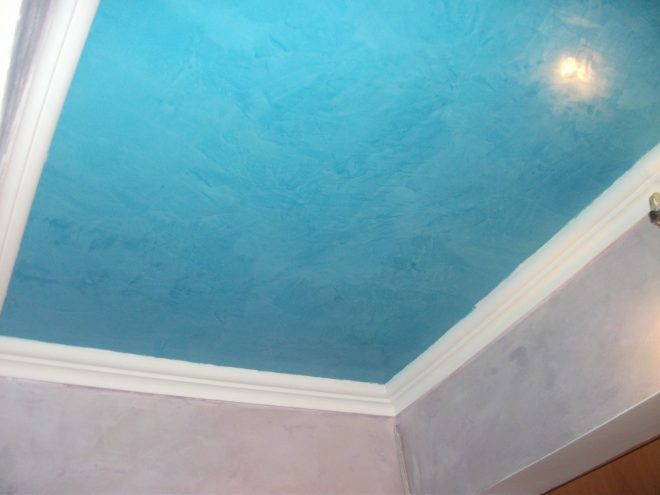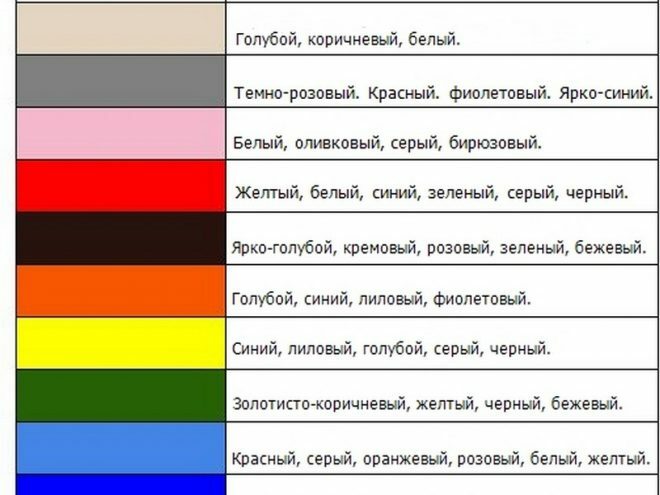The kitchen is a popular and frequently visited area of the apartment. Therefore, the interior must satisfy all the tastes of the family: be stylish, comfortable, multifunctional. At the same time, finishing materials must withstand dirt and moisture. Withstand wet cleaning. The ceiling is an element of the room and an important detail in the look of the kitchen. From the choice of its material and design, the kitchen can sparkle with new colors or the beautiful interior will be ruined. In this article, we will analyze the ceilings and their types in the interior of the kitchen, consider the design options (with a photo).

Material selection
The requirements for a modern ceiling covering are as follows:
Attention! Earned on our website kitchen designer. You can get acquainted with it and design your dream kitchen for free! May also come in handy wardrobes designer.
- have an aesthetic appearance, harmoniously fit into the interior of the kitchen;
- be durable to mechanical stress;
- have moisture resistance;
- be practical and easy to clean;
- have high wear resistance and long service life;
- must be made of environmentally friendly material;
- perform the function of decor, covering the protruding parts of the hood, air duct.
According to these requirements, you can use:
- water dispersion paint;
- decorative plaster;
- PVC panels;
- wooden or plastic lining;
- for rack and pinion - aluminum panels;
- mirror tiles;
- PVC film for stretch;
- drywall moisture resistant.
Color and material make it possible to increase the height of the space, expand visually. Choosing the right decor can lighten or darken a room.
The form is distinguished:
- even;
- curly;
- multilevel;
- vaulted.
Types of ceilings
The construction market offers the following types:
- tension;
- drywall:
- plastic;
- suspension;
- two-level:
- rack and pinion;
- wood;
- wallpaper;
- painting.
Suspended (mounted) types
Suspended ceilings can be: stretch, plasterboard, plastic, slatted, wooden. Depending on the choice of materials, they have advantages and disadvantages. They are called suspended, as they are attached to special frame structures. We'll talk below which one to choose.

Stretch ceiling
This option is a vinyl or fabric canvas. The basis is a frame made of metal or plastic, on which the canvas is stretched. They are stitched together by high-frequency current.

Advantages:
- installation takes little time;
- the ability to stretch and withstand up to 100 liters per meter;
- considered fireproof;
- it has a wide variety of colors and decor;
- moisture resistance.
Minuses:
- can be damaged by sharp and thin objects;
- reduces the height of the space by 4-5 cm;
- in large areas, after installation, a noticeable joint can be observed;
- an unpleasant odor is felt.
Stretch ceilings are: glossy, matte.

Glossy

Matt
It is recommended to treat the surface with an anti-mold solution before installation.
Plasterboard ceiling
This type of finish is suitable for uneven surfaces and hiding defects.

Of the advantages, it can be noted:
- easy to use, flexible;
- moisture resistant;
- has the ability to hide electrical wiring;
- suitable for dividing zones of the kitchen space;
- enhances sound insulation;
- does not crack if the building collapses;
- the possibility of using finishing.
Disadvantages:
- use of a metal profile;
- lowers ceilings from 7 cm;
- complexity of installation.

Plasterboard ceilings can be: single-level; two-level; multilevel. Combinations with glass, mirrors, wood and others are possible with this material.
Plastic ceiling
This is the most affordable and budget option. Smooth and smooth surface, aesthetic appearance, as well as a variety of colors, patterns allow it to be the most demanded material. The panels are available in imitation wood, marble, bamboo and others. White panels are used on the ceiling.

The advantages of plastic panels are as follows:
- ease of care;
- quick installation;
- the panels are moisture resistant, they are not afraid of flooding from above;
- any communication can be hidden under them;
- tolerate temperature changes;
- enhance sound insulation;
- do not smell;
- affordable price and various designs;
- durability.
There are few negative properties:
- reducing the height of the ceiling;
- sensitivity to mechanical stress and sunlight.
Rack ceiling
This type of ceiling covering is a construction of a large number of strips. They are made of steel, aluminum, wood. Details are varnished. Creates a flat and curved surface. The most popular ones are made of aluminum. There are: open, closed and gapless.

The advantages of this option are:
- resistance to temperature and moisture extremes;
- the ability to hide all surface imperfections and close the wiring, communications;
- quickly assembled;
- convenience and ease of care;
- has a long service life;
- complies with fire safety standards;
- Made from materials that have been tested for environmental compliance;
- made from non-static materials.
And also there is one drawback:
- lowering the height of the room.
Wooden ceiling
Wood has long been used in interior decoration as an environmentally friendly material. It is breathable. The following types are used:

- Lining. Edged boards of the same size, which are fastened "thorn-groove".
- The panels are wooden. They are a multilayer canvas, the first layer of which consists of valuable wood species.
- Cladding boards impregnated with wax, thanks to which they are not affected by moisture, do not crack or exfoliate.
- Plywood. These are sheets of wood stacked on top of each other. For use in the kitchen, they are treated with a special compound.
- Wooden wallpaper.

Has advantages:
- environmentally friendly natural material with a natural texture inherent only in wood;
- keeps warm;
- has good sound insulation;
- unpretentious in maintenance and easy to install.

The cons are as follows:
- absorbs moisture and odors;
- fire hazardous;
- significantly reduces the height of the ceilings.
Duplex and multi-level ceilings
They are distinguished by nobility, a set of various materials, textures and shapes. There are a lot of two-level options, it all depends on the designer's imagination, tastes and finances of the customer. This method allows you to isolate the kitchen area and create a unique decor.

A multi-level ceiling is made of different materials, and a combined version is also used. Apply: plasterboard, metal structures, vinyl sheets, wood, slats, MDF panels with imitation of stone.

With the help of different levels of ceiling height, you can fantasize and decorate with different materials as you like. This gives the optical depth of space, more space and freedom. Hides all unnecessary details, surface flaws. This decor is complemented by various light sources.
Whitewashing, staining and wallpaper
Whitewashing and painting is a classic design. This type of finish requires preliminary cleaning, leveling and surface treatment. Putty, primer takes a long time to dry. The presence of dirt and dust also complicates the work.

This type of design was popular 10-15 years ago. With a variety of materials and mounting technologies, all this faded into the background. Painting with water dispersion paint turns the ceiling into a perfectly flat, clean and tidy space.

It can be easily repainted, decorative plaster can be applied, and it will be simple and predictable. Wallpaper for the ceiling is chosen light and moisture resistant. Neutral or white in color. Advantages: availability, paintability, wide selection, ease of handling the material.

Disadvantages: short-lived, do not tolerate the release of steam and condensate, the inability to hide the wires.
Choice of colors and patterns
Most often, designers choose white. It is traditional and makes the room very light and airy. A glossy shade works best in small, low-height kitchens.

Red is an original idea for high ceilings and large kitchen spaces. Usually he is chosen by people with bright leadership qualities, adventurers. The main thing is to choose the right tone and color of the walls, as well as kitchen furniture and sets.

Black is rarely used. Suitable for tall and large spaces. It is important to decide on the shades of black, otherwise you may get the impression of the absence of a ceiling.

For drawings, they use different landscapes, images of flowers, patterns, the starry sky. Anything that fantasy tells.

The matte look of the ceiling is suitable for large kitchen areas. No dust or joints are visible on such a surface. It is more suitable for classic kitchens. Glossy beautifully reflects the interior of the kitchen, visually expands the space.

A combined ceiling is suitable for a small kitchen. Glossy inserts are used on a matte surface, which increase the volume of the room.

The design of the ceiling and the entire kitchen, made in the same style and with the selected color scheme, is the best solution. For this, there are a lot of materials with a variety of colors, textures and quality. That allows you to choose an option for every taste and budget, create coziness, comfort and a unique interior in every kitchen.




















































